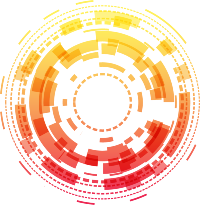Grayscale’s recent launch of a multi-asset crypto ETF on NYSE Arca marks a significant milestone in mainstreaming digital assets. By offering a diversified basket of five major cryptocurrencies—Bitcoin, Ether, XRP, Solana, and Cardano—the firm aims to provide investors with a simplified gateway into the volatile world of crypto markets. This product signals a shift in approach, transitioning from private OTC holdings to a publicly traded vehicle that promises increased liquidity and accessibility. However, beneath this veneer of maturity lies an underlying concern: does this move truly stabilize the crypto investment landscape, or does it merely lend an air of legitimacy to an inherently unstable asset class?
Hype and innovation often mask deeper risks, especially when the investment product is not fully regulated under existing protections. The GDLC ETF, while covering over 90% of the market cap, skips the safeguard frameworks that traditional ETFs benefit from. This regulatory gap raises questions about investor protection, especially amidst unpredictable market swings and inherent technological vulnerabilities. Is this development a prudent step towards market maturity, or just a strategic ploy to attract unwary retail investors under the guise of financial innovation?
Market Concentration or Entrapment?
The choice of major digital assets like Bitcoin and Ethereum is unsurprising—they are institutional favorites and stable enough to be perceived as “safer” within the crypto sphere. Yet, the inclusion of XRP, Solana, and Cardano speaks to a broader, more ambitious attempt to reflect the ever-expanding ecosystem. Still, focusing on these assets’signals a potential over-reliance on a few dominant tokens, especially considering their susceptibility to regulatory crackdowns and technological flaws. The fact that this ETF captures the bulk of market cap—excluding stablecoins and memecoins—embeds an implicit assumption that these assets are the best bets for significant growth or preservation of value. But is banking on these assets’s future stability realistic, or just a risky bet on a volatile subset of the crypto universe?
This product’s core flaw is perhaps its concentration—it risks becoming a high-stakes container of systemic vulnerabilities. If any of these major assets suffer a sudden market correction, liquidity could evaporate faster than the market can react. Market dominance does not imply immunity; in fact, it could amplify contagion risks in a downturn. Thus, investors must ask whether this diversification is meaningful or simply a façade of safety for flawed assets.
The Illusion of Regulation and Mainstream Acceptance
Grayscale’s move signifies a desire to tap into the allure of institutional credibility. Going from OTC to NYSE-traded makes the product more accessible, tempting investors who previously shied away from crypto’s technical complexities. Yet, the absence of registration under the Investment Company Act of 1940 means these investors are not afforded the same protections as conventional ETFs. While this might accelerate adoption, it also exposes them to heightened risks: regulatory crackdowns, market manipulation, and technological failures that could wipe out their investments overnight.
This gap underscores a troubling paradox. The crypto industry continues to seek legitimacy through traditional financial channels, but the core products often remain outside rigorous regulatory oversight. The allure of easy access and fresh liquidity masks an underlying vulnerability—crypto assets still operate in a loosely regulated environment with only self-imposed standards. This disconnect could threaten to undermine any perceived progress towards mainstream acceptance, revealing that the crypto ecosystem remains a wild frontier disguised as a controlled marketplace.
In essence, Grayscale’s crypto ETF roll-out is less a victory for investor protection and more a gamble—a bold step into a murky future where regulation is incomplete, assets are volatile, and the line between innovation and risk is perilously thin.

